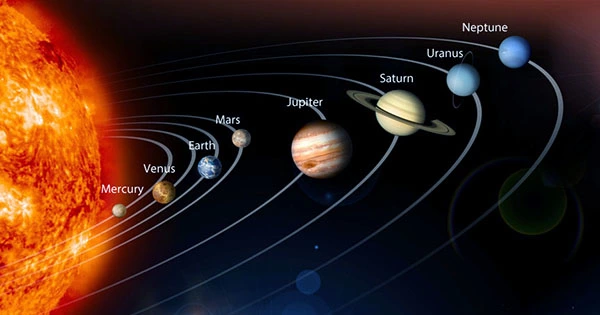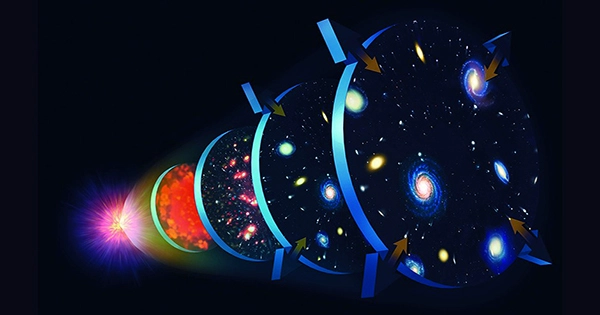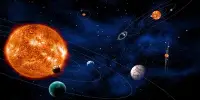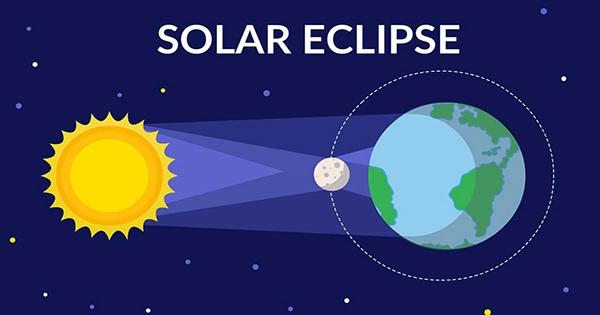Since the planets are continually moving in their orbits and the distance between each planet and Earth is changing, this topic is frequently asked, but it is actually challenging to answer. They are closest to one another when both planets are on the same side of the Sun and line up with it. The greatest distance between two planets occurs when they are on opposite sides of the Sun and form a line with the Sun.
During the time of superior conjunction, an inferior planet—one whose orbit is interior to Earth’s orbit—is the furthest away from Earth, while it is closest to it near the time of inferior conjunction. An inferior planet (Mercury or Venus) is shown by a gray circle in the diagram below (from this website), where Earth is the blue-green dot.
Superior planets, like Mars, which are depicted as the red circle in the picture above, are closest to Earth at roughly the time of opposition and are furthest away at roughly the time of conjunction. However, because the planets’ orbits are ellipses (rather than complete circles) because they are not exactly in the same plane, opposition or conjunction may not take place at the exact same time as the planet’s minimum or maximum distance from Earth.
Typically, when people ask this question, they mean “How far apart are the orbits of the planets from Earth’s?” (Since the planets are limited by their orbital separation, they are essentially the same questions.) By assuming that the orbits are circular and coplanar and examining the distances between each planet and the Sun, you may roughly calculate this. We typically express the distances in astronomical units because they are so far apart (AU). The average distance (or AU) between Earth and the Sun is roughly 150 million kilometers (93 million miles). The distance in AU between each planet and the Sun is listed in the table below. (These figures are from this website.)
Subtract the two planet-Sun distances to determine the approximate distance in AU between the orbits of the two planets. For instance, Venus is 0.72 AU from the Sun whereas Earth is 1 AU from the Sun. These two distances are separated by 1.00 – 0.72 = 0.28 AU. Multiply by the conversion shown above to convert the number to kilometers: 42 million kilometers are equal to 0.28 times 150 million kilometers. Another illustration: Earth is 1.0 AU from the Sun, but Jupiter is 5.2 AU away. In other words, the distance between the orbits of Jupiter and Earth is around 5.2 – 1.0 = 4.2 AU or 630 million kilometers. Using the numbers above, you may apply this method to any planet.
To be thorough, I should add that some planets behave better under the circular orbit assumption than others. For instance, because of Mars’ rather eccentric elliptical orbit, the distance at which it is “closest to” the planet fluctuates. Because of this, Mars approached Earth in August 2003 more closely than it had in roughly 60,000 years (it won’t go that close again until the year 2287!). But in general, the figures mentioned above are what is taught in introductory astronomy schools. The planets’ eccentric orbits can allow them to approach one another slightly closer than the distance that one finds from the straightforward calculation, which is why the Earth-Venus distance calculated in the previous sentence (42 million kilometers) is slightly greater than the actual minimum Earth-Venus distance (38 million kilometers).
You can choose a time and then look down on the Solar System from above to see where the planets are and see which ones are closest to Earth right now by visiting the Solar System Simulator or Solar System Live websites.
If you want precise data and are technically minded, you can utilize the JPL Horizons system to choose a planet, a time frame, and “Observer range and range-rate” as an output quantity. In addition to a list of times, you will also receive the Earth-object distance in AU.















